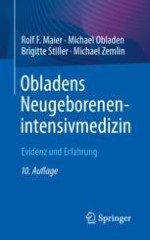2023 | OriginalPaper | Buchkapitel
6. Kardiale Erkrankungen
verfasst von : Brigitte Stiller
Erschienen in: Obladens Neugeborenenintensivmedizin
Verlag: Springer Berlin Heidelberg
2023 | OriginalPaper | Buchkapitel
verfasst von : Brigitte Stiller
Erschienen in: Obladens Neugeborenenintensivmedizin
Verlag: Springer Berlin Heidelberg
Print ISBN: 978-3-662-66571-8
Electronic ISBN: 978-3-662-66572-5
Copyright-Jahr: 2023
